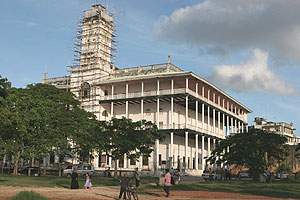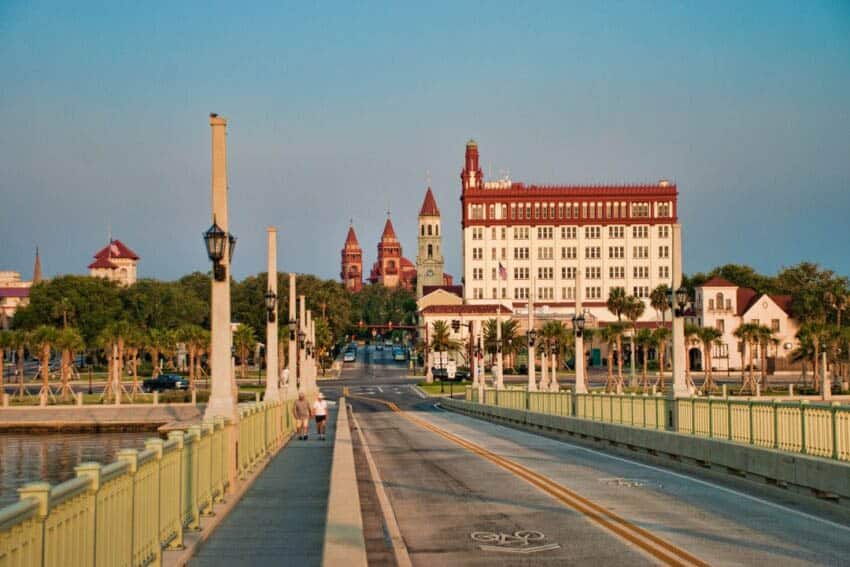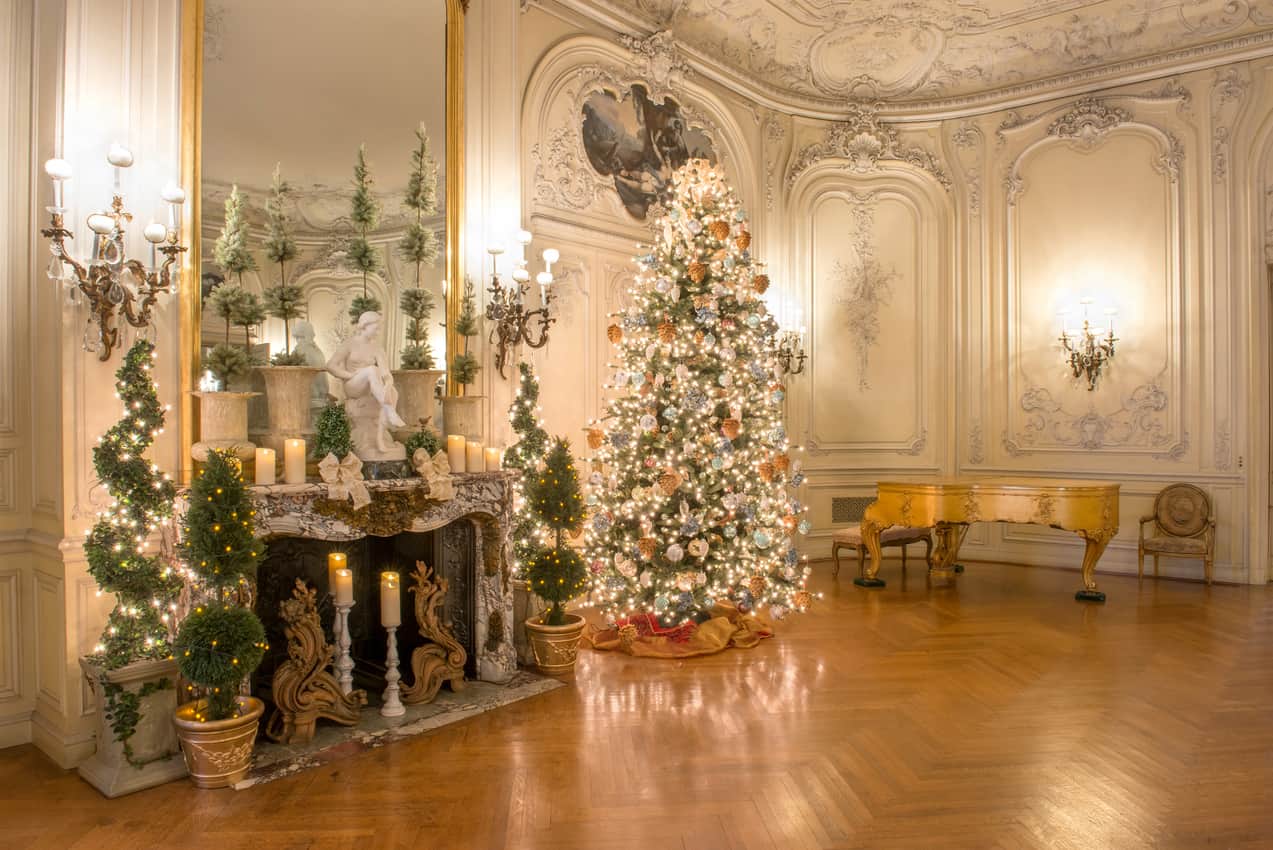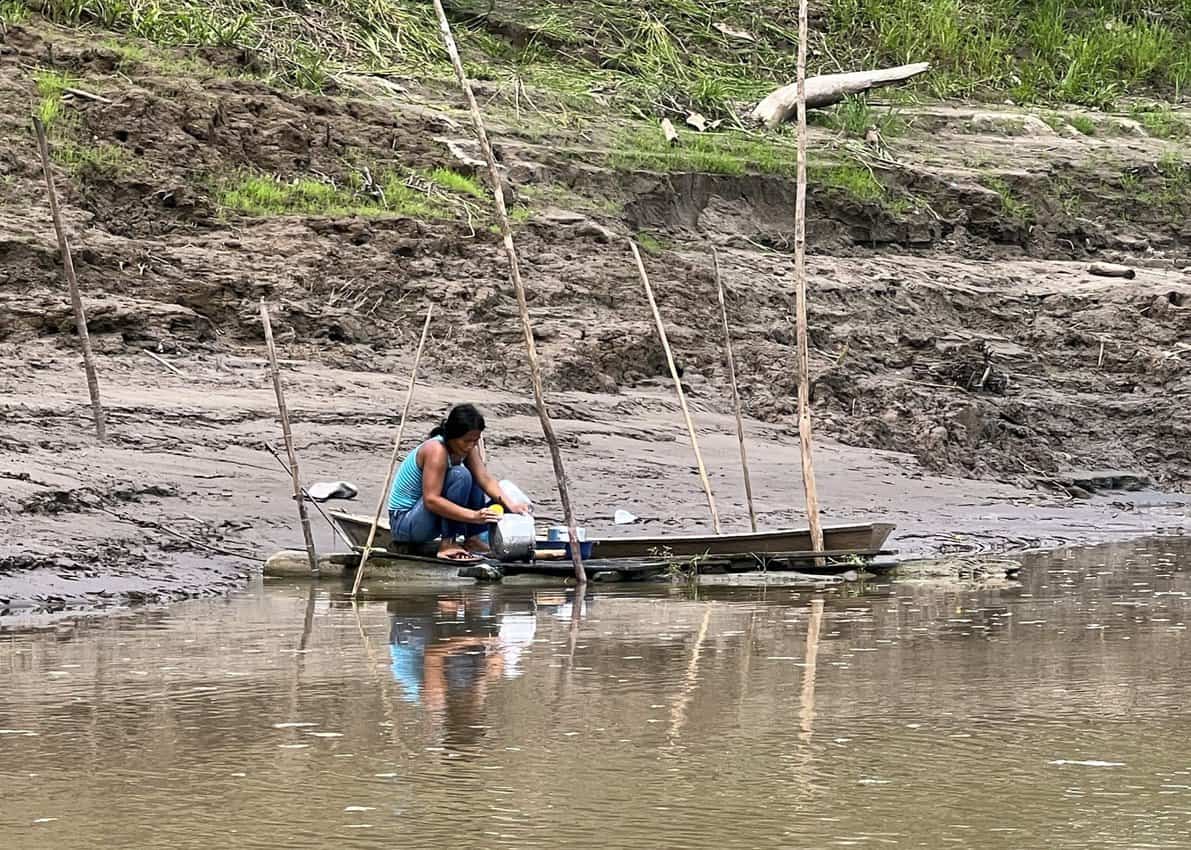
By Ulrike Lemmin-Woolfrey
Where
Zanzibar consists of several small islands in the Indian Ocean, some 40 kilometers off the Tanzanian mainland, six degrees south of the equator.
There are two main islands, Pemba and Unguja, also called Zanzibar Island.
On Zanzibar Island, which is roughly 1,651 square kilometers small, the capital Stone Town, or Zanzibar Town, can be found. Semi-autonomous, Zanzibar is part of Tanzania.
Why Go
Zanzibar is a magical blend of Arabia and Africa and combines history with tropical beaches, making it appeal to pretty much everybody.
The capital Stone Town’s architecture is a mix of Omani palaces, Arabian arches and Indian wooden balconies and chunky doors, still complete with hefty brass studs to ward off an attack by elephants, although judging from the narrowness of the town’s streets and the fact that there are no elephants on the island, that precaution seems somewhat hasty.
When to Go
Being so close to the equator, Zanzibar’s temperatures are steady throughout the year, going from warm to quite hot (25 degrees Celsius to slightly above 30 degrees), with the advantage of a fresh sea breeze catching you everywhere.
The so-called “heavy rains” last from March to end May, although when we went in April we only got utterly soaked twice. The “short rains” take place in November.

Getting there
One of the advantages of Zanzibar is that not many airlines fly directly to Zanzibar, keeping the destination off the major package operators’ radars. But there are regular services via Dar es Salaam or Nairobi with larger airlines such as Emirates, KLM and Kenya Airways. From Dar es Salaam it is only a 20-minute hop to the island’s airport.
Getting around
You can hire a car with an international driving license for US$50 per day, but keep in mind that driving is on the left, there are regular police checkpoints across the main island where you need to know the ropes, and you share the road with people, donkeys, bicycles and other drivers who think it is them against the rest of the world.
No such thing as giving way or following another car if you can somehow overtake it.
The easiest way to get around is to go on organized tours, which usually involve your personal driver and guide for US$25 per person, with kids usually going for free. Very civilized and personal service with no large tourist groups following ‘the umbrella.’
Best attractions
Even if you are after a beach or water sport holiday, I suggest you schedule at least two days for a visit to Stone Town. The once magnificent capital is now frayed around the edges, but exudes a certain charm that draws visitors in and gets your mind racing as to what these grand old buildings could look like, if only someone was willing to spend time and lots of money on them.

The House of Wonders (Bait al Ajaib), formerly the ceremonial palace of Sultan Bargash, incorporates most of the typical Zanzibarian architecture: the enormous wooden doors, a reminder of both Arab and Indian craftsmanship; the tall columns creating shady verandas around the building, and all rooms having been built along the four sides of the house, creating an airy and cool courtyard inside.
The House of Wonders dominates the seafront of Stone Town and was once connected with the majority of the other white palaces along the seafront by way of wooden shaded walkways.
Next to the wondrous house, which, by the way, got its name due to it being one of the first buildings receiving electricity in East Africa, is the old fort, which houses a still much-used amphitheater, a couple of good art galleries, and the Neem Tree restaurant.
The rabbit-warren that is old Stone Town houses many attractions, such as the old Persian Baths, the Cultural Centre, the spice market and many private houses which once belonged to wealthy merchants, and still display the trappings of splendor, such as delicately carved balconies and shuttered windows.
Spice Plantations
Another must, before you head to the beach, is a visit to a Spice Plantations and the Jozani Forest.

There are several spice plantations that are open to visitors: You will be taken around by a guide, who will let you sniff, taste and experience all the small jewels that grow on the islands.
Cinnamon, ginger, lemongrass, chili, cardamom, vanilla, turmeric, curry leaves, nutmeg, obviously cloves, bay leaves, and many more kitchen staples, together with ten species of banana, jack fruit, durian, guava, papaya and the ubiquitous coconut, which will be retrieved from its lofty place whenever you feel thirsty, make for an interesting day out.
The Forest Comes Alive
Further inside the island, the Jozani Forest, part of the Jozani Chwaka National Park, is a dedicated nature reserve that offers a home to the rare Red Colobus monkeys, which can only be found there.
The mature forest, where precious hardwoods such as teak and mahogany, raffia palms and wild date palms have grown tall, and animals such as chameleons, elephant shrews, and bush babies live, is overwhelming at its best, but once you encounter a group of monkeys, the forest truly comes alive.
The first sign that there are monkeys around are the rustling leaves and then you can spot the long straight tails dangling from the braches. The stunning forest together with the mad-cap and not-at-all-shy monkeys are an experience unique to Zanzibar Island, and should not be missed under any circumstances.
Mustn’t miss
Another must-do is taking sundowners on Serena Inn hotel’s terrace at sunset. Everything you imagine about exotic Zanzibar comes true there whilst you sit comfortably, sipping a cocktail and being serenaded by a small local orchestra.
At sunset the triangular sails of the dhows come close to the coast, returning from fishing trips or longer voyages, dark triangles set against the orange red skies and small green islands with white beaches in the background.

And if this wasn’t breath-taking enough, you have dolphins leisurely accompanying the sailboats and jumping out of the water just for your camera. Sounds just like one of those tacky oil-paintings, but its true never-the-less, and something you won’t forget in a hurry.
Best Lodging
There are plenty of hotels suitable to any budget both in Stone Town, as well as on the east coast.
The best in Stone Town is the Serena Inn (024 2233019, email) where all possible conveniences are available.
The pool overlooks the Indian Ocean and the cool elegant décor allows your senses a respite from the smells and sounds that are Stone Town.
If it is something individual and unique you are after then Emerson and Green (0747 423266, email) is the place for you: a converted merchant’s house, the hotel offers only 10 guestrooms, but these are stunningly decorated with Zanzibarian antiques, four-poster beds, 20-foot wooden ceilings, some rooms have balconies and air-conditioning, others large stone tubs for an unusual bathing experience.
For smaller budgets try the Dhow Palace Hotel (024 2233012, email) or the Clove Hotel (0747 484567, email). For more accommodation options, find unique Zanzibar hotels and interesting tours in Zanzibar.
Best Eats
A must for all visitors to Stone Town is an evening at the Tower Top Restaurant on top of Emerson & Green. Every day sees a different set menu, which can be viewed in the hotel’s reception, seating is on cushions on the floor and views over the town are stunning.
With only a few places available early booking is a must. (0747 423266, prices set at US$30 pp).
Kidude Restaurant, next to Emerson & Green, is a Moroccan-inspired retreat where travelers as well as expats relax with simple fare and a Kilimanjaro beer (0747 423266, prices from US$3 for starters).

For a bar cum restaurant, try Mercury’s. Named after the island’s most famous export – Freddie Mercury – the restaurant is on the beach next to the dhow harbor and has a relaxed atmosphere, excellent cocktails and a wide variety of food (024 2233076, main courses from US$6).
To experience the ethnic food of Zanzibar an evening visit to Forodhani Gardens is essential. Every night the beach promenade in front of the House of Wonders comes alive with an array of food stations: Zanzibar Pizza – a cross between an omelet and pancake filled with either with savory meat and vegetables or sweet with banana and chocolate – are delicious and at US$1 the cheapest filling meal on the island.
Fish, prawn, lobster and meat kebabs are freshly cooked and filled chapatti breads and roasted cassava roots round off the evening.
Best shopping
Stone Town is one big shop – street vendors mingle with small shops, many of which cater to the travelers’ souvenir needs. Behind the House of Wonders, Gizenga Street is filled with art galleries selling the typical naïve Tinga Tinga paintings, shops selling African carvings, and the colorful Kangas – cloths which the women wear and that make great beach wraps – and Massai beaded jewelry.
The area around Shanghani Street has a few more up-market souvenir shops, most notably Treasure Trove, which stocks clothes, jewelry and other art and craft artifacts made in Africa.
The local spices are available nearly everywhere, but if you want quantities of certain spices as compared to already made-up combinations, try the sprawling Darajani Bazaar where you can anything from freshly caught octopus to mosquito nets.

Visas and Documents
Everybody needs a visa into Tanzania, which you can either arrange beforehand, or upon arrival; neither takes long. Having a visa stamp already on your passport does not save time at immigration either, I am afraid, so do whatever suits you best.
You will need to complete an immigration card upon arrival, not all airlines give those out before landing, and another card needs to be completed on leaving, but all are straightforward.
Health and safety
Zanzibar, together with mainland Tanzania, is a malaria area, so you will need to get suitable combination of malaria prophylaxis. Check with your nearest tropical diseases institute which brands are recommended for the time you are planning to go.
Although no vaccinations are officially recommended, make sure your typhoid and tetanus shots are up to date. It is Africa and facilities are a little more rudimentary than in the west.
Zanzibar is relatively safe for travelers and women alone, although it is advised not to stroll around the narrow streets of Stone Town alone at night.
Respecting local culture
Zanzibar is a predominately Muslim country and although very used to tourists and very tolerant, it is best to avoid shorts and spaghetti-strap t-shirts while in Stone Town in order not to offend the locals. In the beach resorts on the coast anything goes, although some resorts have dress codes for dinner.
The people are very friendly and generally greet you with a ‘jambo mama’, or ‘jambo bwana’ and simply want to chat. The street hawkers in Stone Town can be a little more persistent, but a polite ‘no thank you’ is usually sufficient to shake them off.
The local children do on the whole not stretch their hands out wanting money and gifts – yet – and it is officially discouraged to give out money – so try not to, however cute they may be.
Internet Resources
allaboutzanzibar.com

Ulrike Lemmin-Woolfrey is a freelance writer currently living in Oman. Her work has been published in The Weekly Telegraph, Business Traveller, Oman Today and CNTraveller.com. She is married to Ian Lemmin-Woolfrey, a part-time freelance photographer.
- These 9 U.S. National Parks Require Reservations in 2024 - April 17, 2024
- Take a Hike in Olympic National Park - April 17, 2024
- The Wild Mississippi: 2340 Miles Across Ten States - April 8, 2024





